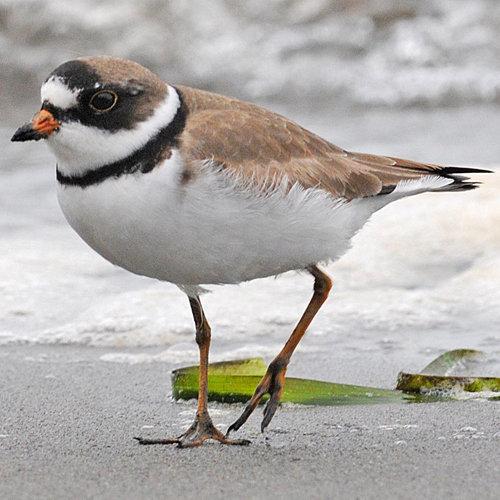General Description
The Semipalmated Plover is a small plover with a short bill and yellow-orange legs. It has brown upperparts with white below and a single, dark breast band. The breast band, sides of head, and forecrown are black in breeding adults, and brown in non-breeding adults and juveniles.
Semipalmated Plovers are Fairly Common in Western Washington from May and again July-September.Habitat
During migration and in winter, Semipalmated Plovers inhabit coastal mudflats and exposed sandy beaches. They also migrate through the interior in small numbers, spending time on lakeshores, alkaline ponds, and shores of sloughs and flooded fields. They breed throughout the North American Arctic and subarctic, often on gravel bars along rivers and ponds. They tend to avoid marsh vegetation.
Behavior
Semipalmated Plovers walk or run with their heads up, pausing to look for prey. They commonly 'foot-stir," holding one foot forward and vibrating the substrate to cause invertebrates to move and be detected. They typically run if disturbed, but they are also fast, powerful fliers. Semipalmated Plovers roost and fly in flocks, but forage singly. They are territorial around nesting and feeding areas.
Diet
On the coast, the plovers' diet consists of marine worms, crustaceans, and small mollusks. On breeding grounds and during migration inland, Semipalmated Plovers eat mostly insects.

No comments:
Post a Comment